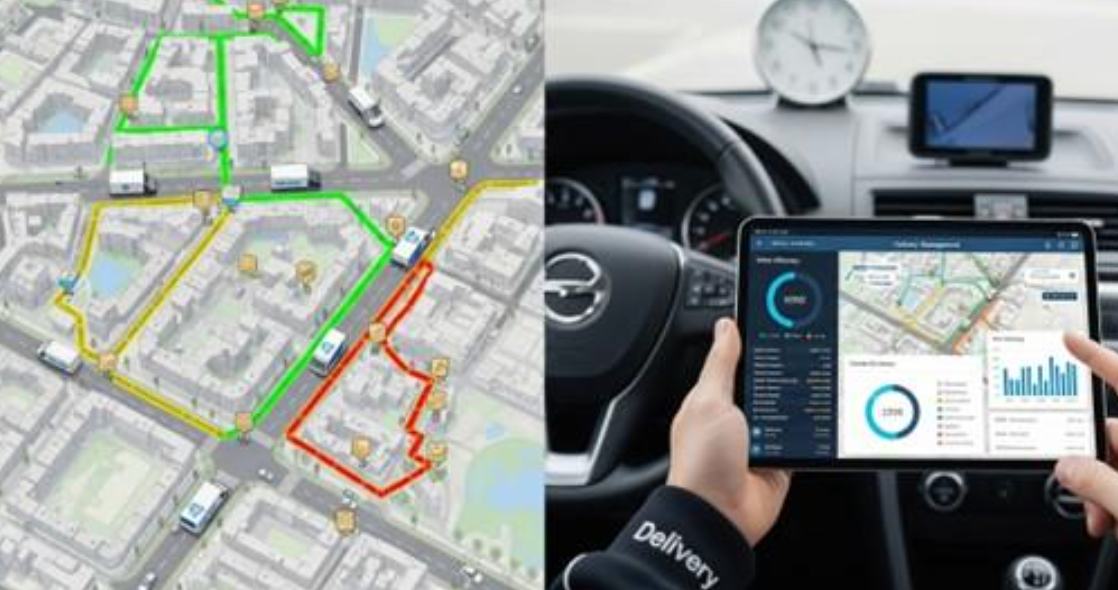Common Mistakes to Avoid When Implementing Route Optimisation

When it comes to modern logistics, route optimisation is one of the most powerful tools a business can adopt. By streamlining delivery routes, companies save time, reduce fuel costs, and keep customers happy with on-time deliveries. Although the idea is simple, implementing route optimisation can be trickier than expected. Many businesses dive in with the right intentions but stumble over common mistakes that reduce efficiency rather than enhance it.
Think of it like setting off on a road trip without properly checking your map or fuel levels—you might eventually reach your destination, but not without unnecessary stress and extra costs. In logistics, those mistakes can add up quickly, costing you money, time, and customer trust.
In this blog, we’ll break down the most common mistakes businesses make when implementing route optimisation and, more importantly, how you can avoid them to ensure your operations run smoothly.
Common Mistakes That You Can Prevent When Using Route Optimisation Tools
Jumping right in, let us look at some of the main mistakes many businesses and logistics companies often make when implementing route optimisation.
Relying Only on Manual Planning
There are quite a few companies that still rely on spreadsheets, GPS and guesswork only when implementing route planning. In this case, you are not optimising your routes, but rather trying to plan them without any tangible data or software.
Manual planning often overlooks real-time factors such as traffic, weather, vehicle capacity, time frames and schedules. It places excessive pressure on the route plan, never leaving room for error and decision-making in emergencies.
This is why it is always best to use updated route optimisation software that provides automated results and calculations.
Ignoring Real-Time Data
Even the best planned routes and most optimal routes can change because of real-time conditions. For example, roads can close, the weather can change, there could be traffic jams, or even an issue with drivers. This could lead to delays, which impact customer satisfaction.
Route optimisation systems integrate live traffic feeds, alongside GPS traffic, weather updates and other data to adapt to any changes. This means you can reroute drivers and make decisions in real-time.
Overlooking Customer Time Windows
Delivery is not just about dropping off a package, and even with route planning, many companies forget about the time window available for package deliveries. Customers expect their packages within a certain time frame, typically given as an estimated time of arrival. They plan their day around these deliveries, and delays can cause much frustration and dissatisfaction.
Setting up reroute optimisation also includes time windows as a factor to ensure customer preference., Thus, the software will consider these time constraints to balance efficiency and customer satisfaction.
Not Training Your Team
Even if you have the most advanced route optimisation software, it is of little use if your staff do not know how to use it. Often, drivers resist using software because it is not user-friendly or they do not know how.
It is vital to teach staff and drivers how to use GPS tracking and route optimisation software, offering ongoing support and refresher courses. This helps to involve staff and improve your route optimisation strategy and delivery process.
Forgetting About Scalability
Scalability is something to consider for any business as you grow. Your delivery volumes may likely increase, especially during certain seasons.
Therefore, it is important to update your route optimisation software and strategies to avoid any bottlenecks as your demands increase. You can also select route optimisation software with a platform that is designed for scalability, offering features such as multiple-vehicle routing, cloud-based solutions and easy integrations with other logistics systems.
Neglecting Integration with Other Systems
Route optimisation is not an isolated task; it aligns with order management, warehouse operations, customer communication tools, and real-time tracking. Therefore, it is important to choose software that can integrate with all these systems to create a smooth flow of data across your entire supply chain.
Focusing Only on Cost Reduction
Cost savings are a huge benefit for any business; however, focusing on cost savings no could cost you extra in the long run. You should look at route optimisation tools as a method to improve overall efficiency and increase revenue, not only to cut costs on fuel. It is also important to balance cost savings with driver well-being and customer satisfaction.
Ignoring Driver Feedback
Keep in mind your drivers are on the road daily, and they have insights that could reveal gaps in your route planning system. Therefore, encourage your drivers to provide regular feedback on their experiences on the road and with your route optimisation systems. This is an excellent solution for improving your delivery process, accuracy, and practicality.
Failing to Track Performance Metrics
It is vital to measure how well your route optimisation strategy is working so that you can identify any issues with poorly performing routes and prove your return on investment in your software performance.
Try to track metrics such as on-time delivery rates, fuel consumption, average route completion times and customer satisfaction rates. All these insights help you to fine-tune your strategy continuously.
Conclusion: Drive Smarter, Not Harder
Implementing route optimisation is the smartest move for managing your business’s deliveries. However, it is important to use the right software integrated with other systems correctly.
Avoiding the mentioned common mistakes will help to improve your overall route planning system, which will increase efficiency and enhance customer satisfaction significantly.



